Nationality Filipino Name Benigno Jr. | Role Polit. | |
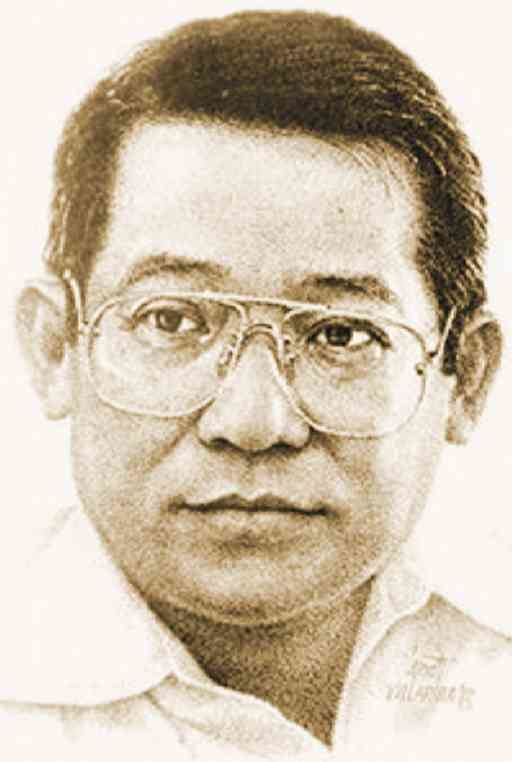 | ||
Full Name Benigno Simeon Aquino, Jr. Died August 21, 1983(1983-08-21) (aged 50)Manila International Airport, Paranaque, Metro Manila, Philippines Resting place Manila Memorial Park, Paranaque, Metro Manila, Philippines Political party Liberal (1959–1983)LABAN (1978–1983) Other politicalaffiliations Nacionalista Party (1955–1959) Residence Times Street, Quezon City Spouse Corazon Aquino (m. 1954–1983) Assassinated August 21, 1983, Ninoy Aquino International Airport, Pasay, Philippines Children Benigno Aquino III, Kris Aquino Parents Benigno Aquino, Sr., Aurora Aquino Education Ateneo de Manila University, San Beda College Similar People Corazon Aquino, Benigno Aquino III, Ferdinand Marcos | ||
A dangerous life full movie the assassination of benigno aquino jr
Benigno Simeon "Ninoy" Aquino Jr. (November 27, 1932 – August 21, 1983) was the former husband of former Philippine President Corazon Aquino and father of former Philippine President Benigno Aquino III. Aquino, together with Gerry Roxas and Jovito Salonga, formed the leadership of the opposition towards Ferdinand Marcos. Shortly after the imposition of martial law, he was arrested in 1972 along with others associated with the Communists armed insurgency and incarcerated for seven years. He founded his own party Lakas ng Bayan and ran for the Philippine parliamentary election, 1978, but all of the party's candidates including Ninoy lost in the election. In 1980 Aquino was permitted by Marcos to travel to the United States for medical treatment following a heart attack, despite being sentenced to death by a military commission on charges of murder, illegal possession of firearms and subversion. He was assassinated at the Manila International Airport in 1983 upon returning from his self-imposed exile. His death catapulted his widow, Corazon, into the political limelight, and prompted her to run for president as member of the UNIDO party in the 1986 snap elections.
Contents
- A dangerous life full movie the assassination of benigno aquino jr
- Aquino assassination 1983
- Early life
- Purchase and Administration of Hacienda Luisita
- Political career
- Early martial law years
- 1978 elections bypass surgery exile
- Planning return
- Assassination
- Funeral
- Legacy
- Personal life
- References
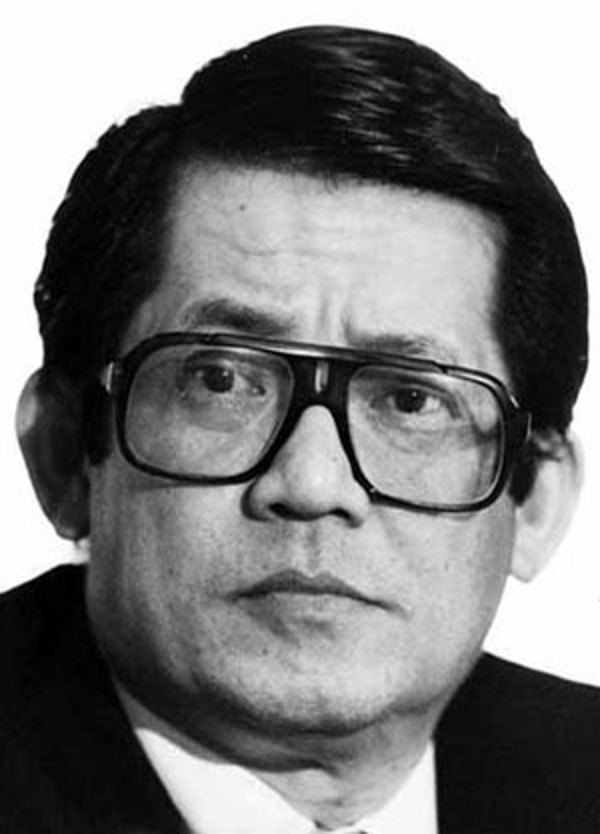
Among other public structures, Manila International Airport has since been renamed Ninoy Aquino International Airport in his honour, and the anniversary of his death is a national holiday.
Aquino assassination 1983
Early life

Benigno Simeón Aquino was born in Concepcion, Tarlac, on November 27, 1932, to a prosperous family of hacenderos, original owners of Hacienda Maling, Hacienda Sawang and Hacienda Murcia.
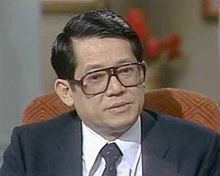
His grandfather, Servillano Aquino, was a general in the revolutionary army of Emilio Aguinaldo, the officially recognized 1st President of the Philippines .
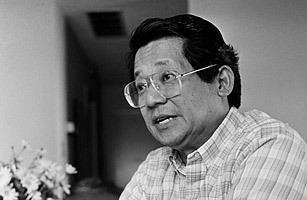
His father, Benigno Aquino Sr. (1894–1947) was the Director-General of KALIBAPI, a puppet political party established during the Japanese occupation of the Philippines. His father was also one of two politicians representing Tarlac during his lifetime, the other being José Cojuangco, father of his future wife. After the war, Benigno Aquino Sr. was arrested and charged with treason for collaborating with the Japanese during the latter's occupation of the country. His father died before the trial was completed.

He received his elementary education at De La Salle College and finished at Saint Joseph's College of Quezon City. He completed his high school education at San Beda College. Aquino took his tertiary education at Ateneo de Manila to obtain a Bachelor of Arts degree, but he interrupted his studies. According to one of his biographies, he considered himself to be an average student; his grade was not in the line of 90s nor did it fall into the 70s. At age 17, he was the youngest war correspondent to cover the Korean War for The Manila Times of Don Joaquín "Chino" Roces. Because of his journalistic feats, he received the Philippine Legion of Honor award from President Elpidio Quirino at age 18. At 21, he became a close adviser to then Defense Secretary Ramon Magsaysay. Aquino took up law at the University of the Philippines, where he became a member of Upsilon Sigma Phi, the same fraternity as Ferdinand Marcos. He interrupted his studies again however to pursue a career in journalism. According to Máximo Soliven, Aquino "later 'explained' that he had decided to go to as many schools as possible, so that he could make as many new friends as possible." In early 1954, he was appointed by President Ramon Magsaysay, his wedding sponsor to his 1953 wedding at the Our Lady of Sorrows Church in Pasay with Corazon Cojuangco, to act as personal emissary to Luis Taruc, leader of the Hukbalahap rebel group. After four months of negotiations, he was credited for Taruc's unconditional surrender and was given a second Philippine Legion of Honor award with the degree of Commander on October 14, 1954.
He became mayor of Concepcion in 1955 at the age of 22.
Purchase and Administration of Hacienda Luisita
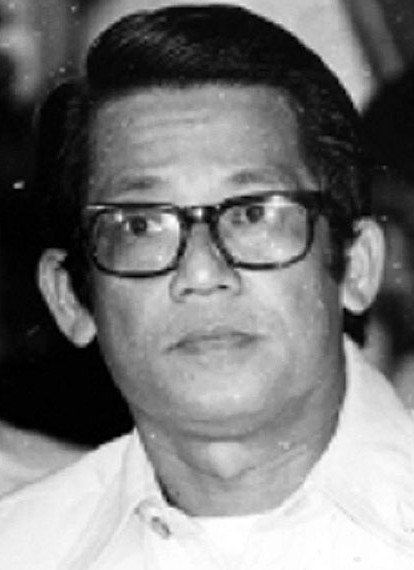
Ninoy helped brokered the purchase of Hacienda Luisita, a 6,453 hectare sugar plantation and the biggest hacienda in the country, for his wife's family in 1957. He later on became the Hacienda's administrator. In return for the family agreeing to distribute Hacienda Luisita’s land to small farmers by 1967, the purchase received preferential treatment from the Philippine government, which included a loan package from the Philippine Central Bank and the Government Service Insurance System (GSIS). However, the family has successfully resisted the distribution of land to small farmers, including during the period of Marcos government (1965-1986). According to London School of Economics professor Dr. James Putzel, who extensive research on agrarian reform in the Philippines, the controversies that would hound the hacienda for decades can be traced to the family's efforts to retain control of the land long after the deadline for land distribution passed in 1967.
Political career
Aquino gained an early familiarity with Philippine politics, as he was born into one of the Philippines' political and landholding clans. His grandfather served under President Aguinaldo, while his father held office under Presidents Quezon and Jose P. Laurel. As a consequence, Aquino was able to be elected mayor when he was 22 years old. Five years later, he was elected the nation's youngest vice-governor at 27 (which record was erased by Jolo Revilla at the age of 25 in 2013). Two years later he became governor of Tarlac province in 1961 at age 29, then secretary-general of the Liberal Party in 1966. In 1967 he became the youngest elected senator in the country's history at age 34.
In 1968, during his first year as senator, Aquino alleged that Marcos was on the road to establishing "a garrison state" by "ballooning the armed forces budget", saddling the defense establishment with "overstaying generals" and "militarizing our civilian government offices".
Aspiring to become the country's president, he became one of Marcos' staunches critic and was considering to ally himself with the enemies of the state, Declassified US government documents dated September 20, 1972, said Aquino “may be willing at some point in the future to ally himself with the Communists as the leader of a revolution, if he is convinced that this is the best way for him to realize his ultimate political ambition."
Aquino supported the Muslim rebellion in Mindanao against the government. According to Hermes Dorado, former national territory division head of the Department of Foreign Affairs, he also offered to surrender the disputed territory of Sabah to Malaysia to court Malaysian Prime Minister Mahathir Mohammad to oust Marcos.
Early martial law years
It was not until the Plaza Miranda bombing however—on August 21, 1971 that the pattern of direct confrontation between Marcos and Aquino emerged. At 9:15 pm, at the kick-off rally of the Liberal Party, the candidates had formed a line on a makeshift platform and were raising their hands as the crowd applauded. The band played, a fireworks display drew all eyes, when suddenly there were two loud explosions that obviously were not part of the show. In an instant the stage became a scene of wild carnage. The police later discovered two fragmentation grenades that had been thrown at the stage by "unknown persons". Eight people died, and 120 others were wounded, many critically. As Aquino was the only Liberal Party senatorial candidate not present at the incident, many assumed that Aquino's NPA friends tipped him off in advance. Years later, the Communists confessed to the crime
Aquino rubbed elbows with leaders of Communist Party of the Philippines themselves — first with founder Jose Maria Sison, and later with Rodolfo Salas, CPP chair at the height of Martial Law. In an interview with Ateneo De Manila University Professor Lisandro Claudio, Salas said not only did he bring wounded New People's Army (NPA) soldiers to Aquino’s houses, but he received guns and cash from Aquino himself. He also said Aquino had a significant contribution to the expansion of NPA in the country. In another communication to the State Department dated September 21, the US Embassy sheds further light on what Ninoy told the American officials. On September 12, Ninoy had a “lengthy luncheon conversation" with two embassy officers about the “growing strength of Communist dissidence in the Philippines." In this luncheon, the senator “readily admitted his past ties with the several Communist factions in the Philippines." He claimed that maintaining links with Huk rebels was a “fact of life" for a Tarlac politician.
President Ferdinand Marcos declared martial law on September 23, 1972 through proclamation 1081. As a known critic of President Marcos, Aquino was one of the first to be arrested and imprisoned, along with opposition senators like Jovito Salonga and Jose Diokno. However, unlike his senator colleagues who were detained without charges, Ninoy was charged of murder, illegal possession of firearms and subversion together with NPA leaders Lt Corpuz and Bernabe Buscayno. He was tried before Military Commission No. 2 headed by Major-General Jose Syjuco. The details of the charges are as follows:
1. In April 1969, Aquino at 25 Times Street, Quezon City gave P15,000 to the New People's Army for the purpose of staging an NPA-sponsored demonstration in Manila which was in fact carried out in Congress, Malacañang and the American Embassy on April 19, 1969 to achieve the objectives of the said organization.2. Aquino in 1967 gave to Bernabe Buscayno in Concepcion, Tarlac a .45 caliber pistol with magazine and ammunition to be used against the government.3. Aquino in August, 1967 in the house of Leonida Arceo located at Barrio San Francisco, Tarlac, Tarlac gave to Buscayno two .45 caliber pistols to be used against the government.4. Aquino in October, 1969 in Barrio Alto, Hacienda Luisita, San Miguel, Tarlac, Tarlac, gave to Commanders Arthur Garcia and Jose Buscayno two armored vests and a pair of walkie-talkies to be used against the government.5. Aquino on November 1 and 2, 1965 in San Miguel, Tarlac, Tarlac, gave to Commander Alibasbas through Commander Danilo several firearms and ammunition which were taken from the house of Manuel Rodriguez and which were to be used against the government and in fact the said firearms were recovered from Commander Alibasbas and his group when they were killed in Barrio Almendras, Concepcion, Tarlac.6. Aquino in 1970 and 1971 at 25 Times Street, Quezon City provided shelter and medical treatment for Roberto Santos alias Commander Felman Benjamin Sanguyo alias Commander Pusa and eight other sick or wounded officers or members of the HMB and NPA.7. It was alleged that during the last days of November to December 2, 1967 Aquino and Bernabe Buscayno as conspirators took Cecilio Sumat a barrio captain of Motrico, La Paz, Tarlac, from his house and killed him in Barrio San Miguel, Tarlac, Tarlac (Criminal Case No. MC-2-22, pp. 76-77, Rollo of L-47185). Sumat was leading the workers in their campaign to implement an agreement between the Cojuangcos (his wife's family) and the government that Hacienda Luisita plantation shall be distributed to the tenants 10 years after its acquisition.On April 4, 1975, Aquino announced that he was going on a hunger strike, a fast to the death to protest the injustices of his military trial. Ten days through his hunger strike, he instructed his lawyers to withdraw all motions he had submitted to the Supreme Court. As weeks went by, he subsisted solely on salt tablets, sodium bicarbonate, amino acids, and two glasses of water a day. Even as he grew weaker, suffering from chills and cramps, soldiers forcibly dragged him to the military tribunal's session. His family and hundreds of friends and supporters heard Mass nightly at the Santuario de San Jose in Greenhills, San Juan, praying for his survival. Near the end, Aquino's weight had dropped from 54 to 36 kilos. Aquino nonetheless was able to walk throughout his ordeal. On May 13, 1975, on the 40th day, his family and several priests and friends, begged him to end his fast, pointing out that even Christ fasted only for 40 days. He acquiesced, confident that he had made a symbolic gesture. But he remained in prison, and the trial continued, drawn out for several years. On November 25, 1977, the Military Commission charged Aquino along with his two co-accused, NPA leaders Bernabe Buscayno (Commander Dante) and Lt. Victor Corpuz, guilty of all charges and sentenced them to death by firing squad. The death sentence was never carried out as Aquino's death sentence was commuted by President Marcos in May 1980.
1978 elections, bypass surgery, exile
In 1978, from his prison cell, Aquino was allowed run in the Philippine parliamentary election, 1978. As Ninoy's liberal party colleagues were boycotting the election, he formed the party Lakas ng Bayan. The party had 21 candidates for the Metro Manila area, including Ninoy himself and Alex Boncayao (who was associated with Filipino communist death squad Alex Boncayao Brigade that killed U.S. army captain James N. Rowe). All of the party's candidates, including Ninoy, lost in the election.
In mid-March 1980, Aquino suffered a heart attack, mostly in a solitary cell. He was transported to the Philippine Heart Center, where he suffered a second heart attack. ECG and other tests showed that he had a blocked artery. Philippine surgeons were reluctant to do a coronary bypass, because it could involve them in a controversy. In addition, Aquino refused to submit himself to Philippine doctors, fearing possible Marcos "duplicity"; he preferred to go to the United States for the procedure or return to his cell at Fort Bonifacio and die.
His request was granted and Ninoy was allowed to go to the US for surgery, together with his entire family. This was arranged after a secret hospital visit by Imelda Marcos. This "emergency leave" was set when Ninoy supposedly agreed to the First Lady's 2 conditions: that if he leaves, he will return; and while in America, he should not speak out against the Marcos regime. Ninoy was operated in Dallas, Texas and made a quick recovery. After which, he decided to renounce the agreement saying, "a pact with the devil is no pact at all".
He, Cory and their children started a new life in Massachusetts. He continued to work on two books and gave a series of lectures while on fellowship grants from Harvard University and Massachusetts Institute of Technology. His travels across the US had become opportunities for him to deliver speeches critical of the Marcos government. Throughout his years of expatriation, Aquino was always aware that his life in the U.S. was temporary. He never stopped affirming his eventual return even as he enjoyed American hospitality and a peaceful life with his family on American soil. After spending 7 years and 7 months in prison, Aquino's finances were in ruins. Making up for the lost time as the family's breadwinner, he toured America; attending symposiums, lectures, and giving speeches in freedom rallies opposing the Marcos dictatorship. The most memorable was held at the Wilshire Ebell Theater in Los Angeles, California on February 15, 1981.
Planning return
In the first quarter of 1983, Aquino received news about the deteriorating political situation in his country and the rumored declining health of President Marcos (due to lupus). He believed that it was expedient for him to speak to Marcos and present to him his rationale for the country's return to democracy, before extremists took over and made such a change impossible. Moreover, his years of absence made his allies worry that the Filipinos might have resigned themselves to Marcos' strongman rule and that without his leadership the centrist opposition would die a natural death.
Aquino decided to go back to the Philippines, fully aware of the dangers that awaited him. Warned that he would either be imprisoned or killed, Aquino answered, "if it's my fate to die by an assassin's bullet, so be it. But I cannot be petrified by inaction, or fear of assassination, and therefore stay in the side..." His family, however, learned from a Philippine Consular official that there were orders from Ministry of Foreign Affairs not to issue any passports for them for national security reasons (after Marcos' exile in 1986, Marcos was denied to come back by Corazon Aquino on the same "National Security" ground). At that time, their passports had expired and their renewal had been denied. They therefore formulated a plan for Aquino acquire a fake passport and to fly alone (to attract less attention), with the rest of the family to follow him after two weeks. Aquino acquired the fake passport with the help of Rashid Lucman, founder of the Bangsamoro Liberation Front, who trained about 30,000 Bangsamoro guerrillas as MNLF fighters and sent the top 90 moro guerrillas to Malaysia to train guerrilla warfare under the Royal Malaysian Armed Forces and the Gurkha Regiment. The passport carried the alias Marcial Bonifacio (Marcial for martial law and Bonifacio for Fort Bonifacio, his erstwhile prison). He eventually obtained a legitimate passport from a sympathizer working in a Philippine consulate through the help of Roque R. Ablan Jr, then a Congressman. The Marcos government warned all international airlines that they would be denied landing rights and forced to return if they tried to fly Aquino to the Philippines. Aquino insisted that it was his natural right as a citizen to come back to his homeland, and that no government could prevent him from doing so. He left Logan International Airport on August 13, 1983, took a circuitous route home from Boston, via Los Angeles to Singapore. In Singapore, then Tunku Ibrahim Ismail of Johor met Aquino upon his arrival in Singapore and later brought him to Johor, Malaysia to meet with other Malaysian leaders. Malaysia had financed a secessionist movement in Muslim Mindanao led by the Moro National Liberation Front to undermine Philippine interests. Once in Johor, Aquino met up with Tunku Ibrahim's father, Sultan Iskandar, who was a close friend to Aquino.
He then left for Hong Kong and on to Taipei. He had chosen Taipei as the final stopover when he learned the Philippines had severed diplomatic ties with the Republic of China (Taiwan). This made him feel more secure; the Taiwan government could pretend they were not aware of his presence. There would also be a couple of Taiwanese friends accompanying him. From Taipei he flew to Manila on then Taiwan's flag carrier China Airlines Flight 811.
Marcos wanted Aquino to stay out of politics, however Aquino asserted his willingness to suffer the consequences declaring, "the Filipino is worth dying for." He wished to express an earnest plea for Marcos to step down, for a peaceful regime change and a return to democratic institutions. Anticipating the worst, at an interview in his suite at the Taipei Grand Hotel, he revealed that he would be wearing a bullet-proof vest, but he also said that "it's only good for the body, but in the head there's nothing else we can do." Sensing his own doom, he told the journalists accompanying him on the flight, "You have to be very ready with your hand camera because this action can become very fast. In a matter of a three or four minutes it could be all over, you know, and [laughing] I may not be able to talk to you again after this." His last televised interview, with journalist Jim Laurie, took place on the flight just prior to his assassination.
In his last formal statement that he was not able to deliver, he said, "I have returned on my free will to join the ranks of those struggling to restore our rights and freedoms through non-violence. I seek no confrontation."
Assassination
Aquino was assassinated on August 21, 1983, when he was shot in the head after returning to the country. At the time, bodyguards were assigned to him by the Marcos government. A subsequent investigation produced controversy but with no definitive results. After Marcos' government was overthrown, another investigation found sixteen defendants guilty. They were all sentenced to life in prison. Some were released over the years, the last ones in March 2009.
Another man present at the airport tarmac, Rolando Galman, was shot dead shortly after Aquino was killed. The Marcos government claimed Galman was the trigger man in Aquino's assassination.
Pablo Martinez, who was found guilty of Ninoy Aquino Jr.'s assassination but previously pinned the blame on Rolando Galman, accused Danding Cojuangco, cousin of his wife Corazon Cojuangco Aquino, as the master mind of the assassination while Marcos was recuperating from his kidney transplant.
After the assassination of opposition leader former Senator Benigno Aquino, Jr. in 1983, the opposition ran for the Regular Batasang Pambansa under the United Nationalist Democratic Organization (UNIDO) and the Partido Demokratikong Pilipino-Lakas ng Bayan (PDP-LABAN) against the ruling Kilusang Bagong Lipunan of Ferdinand Marcos. In the wake of the massive outpouring of protest and discontent following the assassination of Ninoy, the opposition performed better during the Philippine parliamentary election, 1984 compared to the Philippine parliamentary election, 1978, winning 61 seats out of 183 seats or 33%.
Funeral
Aquino's body lay in state in a glass coffin. No effort was made to disguise a bullet wound that had disfigured his face. In an interview with Aquino's mother, Aurora, she told the funeral parlor not to apply makeup nor embalm her son, to see "what they did to my son". Thousands of supporters flocked to see the bloodied body of Aquino, which took place at the Aquino household in Times Street, West Triangle, Quezon City, for nine days. Aquino's wife, Corazon Aquino, and children Ballsy, Pinky, Viel, Noynoy and Kris arrived the day after the assassination. Aquino's funeral procession on August 31 lasted from 9 a.m., when his funeral mass was held at Santo Domingo Church in Santa Mesa Heights, Quezon City, with the Cardinal Archbishop of Manila, Jaime Sin officiating, to 9 p.m., when his body was interred at the Manila Memorial Park. More than two million people lined the streets during the procession which was aired by the Church-sponsored Radio Veritas, the only station to do so. The procession reached Rizal Park, where the Philippine flag was brought to half-staff.
Jovito Salonga, then head of the Liberal Party, referred to Aquino as "the greatest president we never had", adding:
Ninoy was getting impatient in Boston, he felt isolated by the flow of events in the Philippines. In early 1983, Marcos was seriously ailing, the Philippine economy was just as rapidly declining, and insurgency was becoming a serious problem. Ninoy thought that by coming home he might be able to persuade Marcos to restore democracy and somehow revitalize the Liberal Party.
Legacy
In Senator Aquino's honor, the Manila International Airport (MIA) where he was assassinated was renamed Ninoy Aquino International Airport (NAIA) and his image is printed on the 500-peso note. August 21, the anniversary of his death, is Ninoy Aquino Day, an annual public holiday in the Philippines. Several monuments were built in his honor. Most renowned is the bronze memorial in Makati City near the Philippine Stock Exchange, which has become a popular venue for anti-government rallies and large demonstrations. Another bronze statue is in front of the Municipal Building of Concepcion, Tarlac.
Although Aquino was recognized as the most prominent and most dynamic opposition leader of his generation, in the years prior to martial law he was regarded by many as being a representative of the entrenched familial elite which to this day dominates Philippine politics. While atypically telegenic and uncommonly articulate, he had his share of detractors and was not known to be immune to ambitions and excesses of the ruling political class. However, during his seven years and seven months imprisoned as a political prisoner of Marcos, Aquino read the book Born Again by convicted Watergate conspirator Charles Colson and it inspired him to a religious awakening.
As a result, the remainder of his personal and political life had a distinct spiritual sheen. He became recognized as a modern-day peer of Jose Rizal, known for advocating non-violent methods to challenge oppressive governance, inspired by the examples set by Gandhi and Martin Luther King. While Aquino's shift towards a more spiritual approach met with skepticism from some quarters, it significantly influenced his wife's political trajectory. The role Aquino plays in Philippine history may be debated, but his assassination was a critical moment that led to the overthrow of a tyrannical leader and the subsequent re-establishment of democracy in the Philippines.
Personal life
On October 11, 1954, he married Corazon "Cory" Sumulong Cojuangco, with whom he had five children:
In a June 1981 interview with Pat Robertson on The 700 Club, Aquino said he was raised Catholic. According to him, his religious awakening began after reading Evangelical Christian author Charles Colson's 1976 book Born Again, during his solitary confinement under the Marcos regime.
